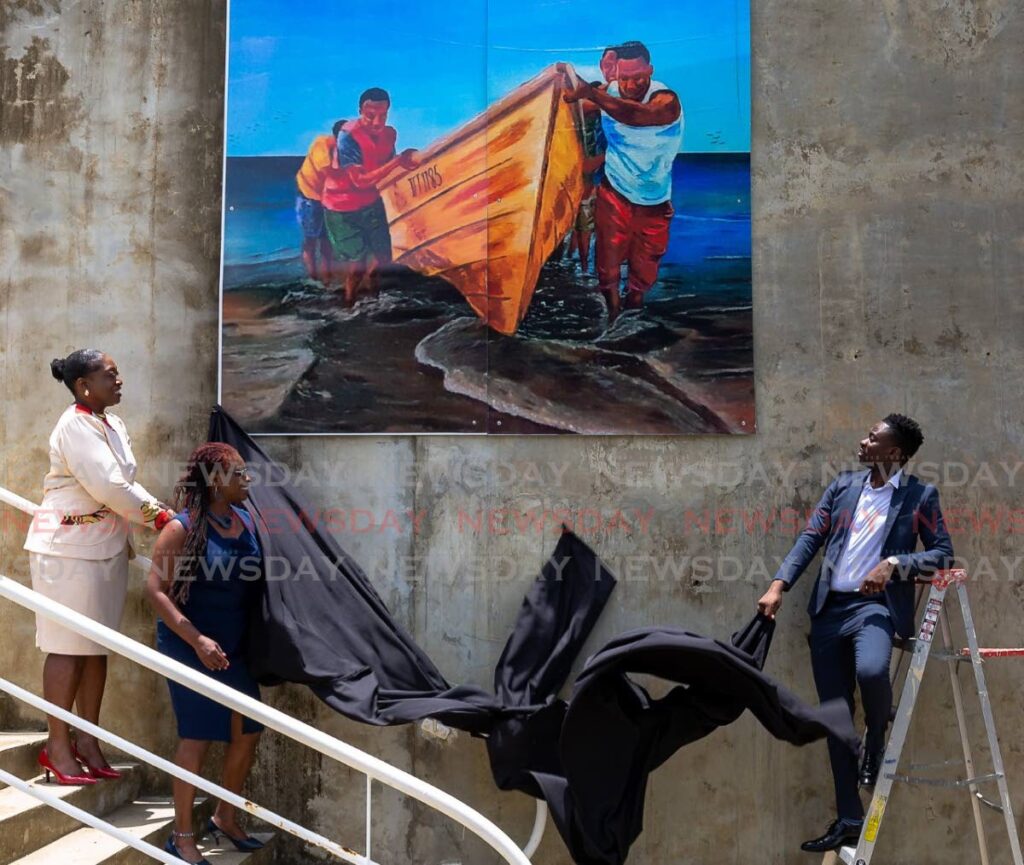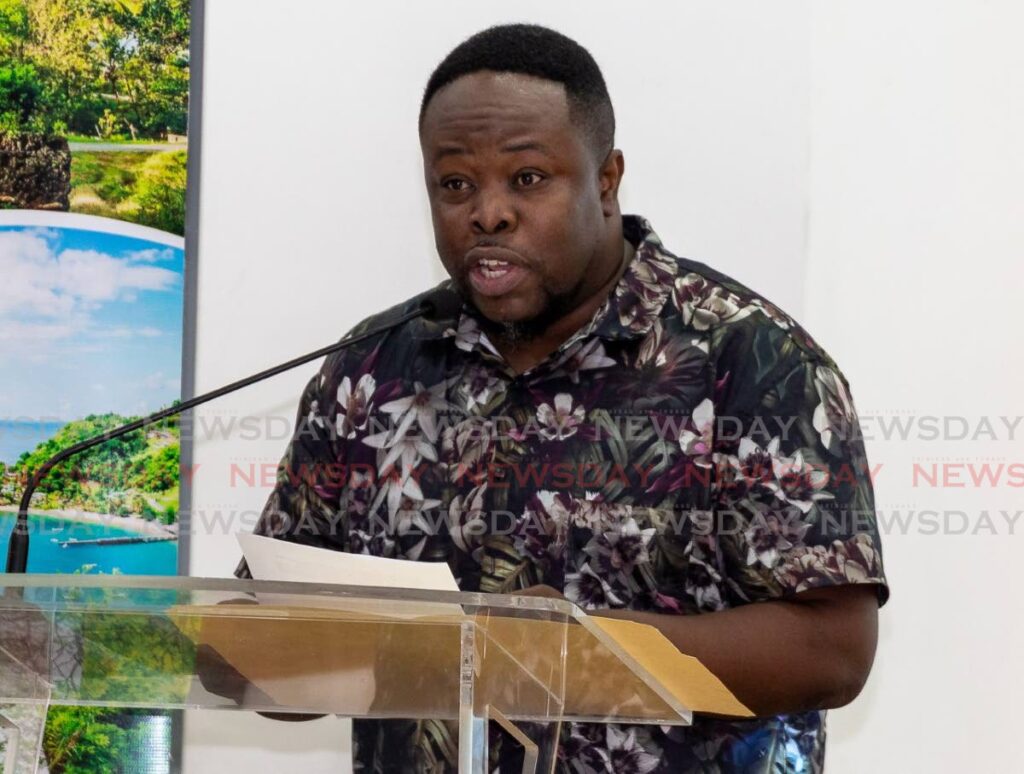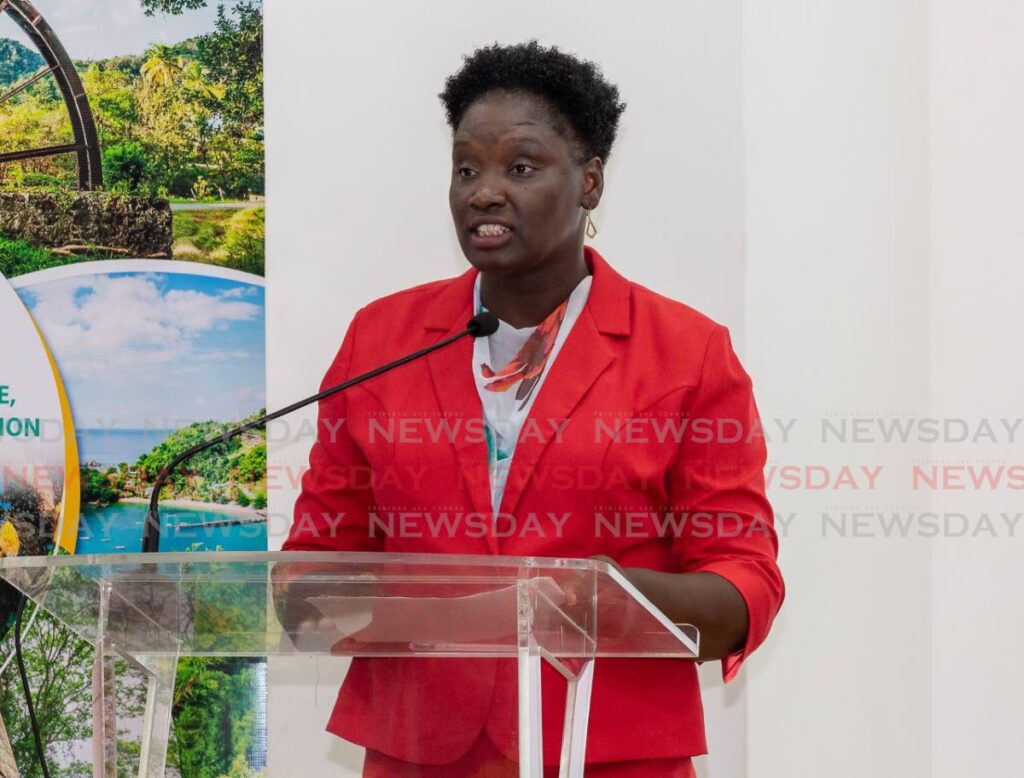Nine artists’ work feature in North East Tobago project

The works of nine of Tobago’s artists can now be seen publicly in communities within the Man and the Biosphere Forest Reserve as part of a pioneering initiative aimed at marrying concern for the environment with the talents of the island’s artists.
In October 2020, Tobago Main Ridge Forest Reserve, the oldest legally protected forest reserve in the Western Hemisphere, was awarded the prestigious UN Educational, Scientific and Cultural Organisation (UNESCO) Man and the Biosphere designation, becoming the largest UNESCO-branded site in the English-speaking Caribbean.
North-East Tobago comprises 15 villages, spanning Belle Garden in the east to Moriah in the north.
The Man and the Biosphere programme is an intergovernmental, scientific initiative which seeks to establish a scientific basis for enhancing the relationship between people and their environments.
It promotes innovative approaches to economic development that are socially and culturally appropriate and environmentally sustainable.

At the launch of the North East Tobago Art Trail on Tuesday at the Belle Garden Multipurpose Facility, project curator Tomley Roberts said the initiative was conceptualised about three years ago as part of a wider plan to have an artistic stamp on that part of the island.
Roberts, an art teacher at Speyside High School, said members of the ERIC (Environmental Research Institute, Charlotteville) team had meetings with village artists, students of Speyside High School and other stakeholders on ways to celebrate the designation.
He said the first initiative was installing the life-sized Ah Ahwe Own sculpture at the Bloody Bay recreation site on June 7, 2022.
Roberts, who crafted the sculpture, said it symbolised the importance of the biosphere reserve in promoting harmony and synergy between communities and nature.
The art trail, the second initiative, features exhibits at specific sites within the northeast communities.
Roberts, whose painting Hand in Hand with the Environment is displayed in Delaford, told Sunday Newsday, “This is an important initiative that showcases our talent here in Tobago and also shows sensitivity to the environment, because these pieces are now installed within the Man and the Biosphere Forest Reserve, showing exactly what is our lifestyle and some of the things we do.”
He singled out an Avion Orr painting, Fisher Folk, to highlight his point. It was unveiled at the launch by THA Chief Secretary Farley Augustine, Secretary of Food Security, Natural Resources, the Environment and Sustainable Development Nathisha Charles-Pantin and Belle Garden/Glamorgan assemblyman Dr Faith BYisrael.
“The fishermen taking the boat out of the water is a part of our tradition, as is planting and dancing the cocoa. These are very important attributes of our cultural heritage that we have tried to immortalise, in a sense, because these are now permanent exhibitions and they would be featured throughout Tobago.”

The other artists involved so far are Jason Nedd, Earl Manswell, Chris Thomas, Coryse Wright-Kerr, Israel Melville, Quishang Jacob and Janina Awals.
Roberts, who is also president of the Tobago Visual Arts Association, said visitors, when passing through northeast Tobago, will now have the opportunity to stop and take pictures of the pieces
“It will be like a nostalgic affair, to reminisce on some of the things that we have here in Tobago. All in all, it’s a whole development of the purple (creative arts) and orange (cultural goods and services) economy,
ensuring that we use our cultural heritage and monetise it so that our artists and visitors coming to the island can benefit.”
He said it is very important for people to see art displayed publicly.
“Most people would have had the privilege of looking at artwork in a gallery, but now what we have done, and which I believe is very iconic in Tobago, is that we have now taken the art and brought it into the environment where people live. So they can now see the artwork and develop an appreciation for it.”
Saying the future looks bright, Roberts said, “We have a lot to look forward to in terms of the artistic development of the island.”
Welcoming the art trail, THA Chief Secretary Farley Augustine said Tobago must capitalise on its vibrant creative sector.
“We ought to spend more time and resources on those in the creative arts, and that includes the visual arts,” he said.
Augustine recalled many years ago, Tobagonians knew all the artists on the island, but he lamented this is no longer the case.
“At some point people started telling their children it is not a profession to get into, because you cannot make money from it, until you become an adult and you realise that one piece of artwork can be a car down payment.”
Augustine told the artists they are important to Tobago’s development.
“You are instrumental in documenting the life and lived experience of our people, the history of our people. Hundreds of years from now, the world will get to see how we are living today from the snapshots you have been able to paint or carve with your hands.”
Augustine told the audience the Man and the Biosphere designation “says to the world that Tobago is an extremely important ecological space – a space that requires our constant attention.”
But he said for too long the rainforest was just about “cutting a road and driving around it
“What is happening with these installations is that they are forcing people to stop and to look, to take a photograph and understand how our people for many generations have lived in harmony with our environment.”
Augustine said some of the practices depicted in the pieces are worth preserving for future generations
“In our 60th year (of independence), we can celebrate the way we live as a people and to say to young people that some of these practices are worth keeping.”
He recalled that when he was a child, his late grandmother made quilts and taught basket-weaving in village groups.
“For a while as a child I thought that those things were symbols of poverty.”
Augustine said his perspective changed over the years, especially when he got married. Joking that his wife had “carted me off” to a trading store to shop days before Christmas, Augustine recalled seeing “all kinds of prices for baskets.”
He said he regretted not learning the skill of basket-weaving from his grandmother. Her children, he added, also did not learn the skill, because to them, it was not a “modern and progressive” activity.
In his address, Augustine also said village signs must be replaced.
“Those signs around the island that say, ‘Welcome to the villages and drive with care’ – those now need some replacing and they need upgrade with much more liveliness, so that when our visitors are moving around the island they will actually feel inclined to stop by the welcome sign.”
He added the signage must also reflect the uniqueness of the respective villages.
“Every community on this island has something that they are good for and they are great at that can be celebrated. That should be celebrated in the ‘Welcome’ signs.”
He asked the administrator in the Division of Tourism, Culture, Antiquities and Transportation to start that project in the new fiscal year.
Augustine said there is also need for permanent signs at the start and end of the Man and the Biosphere designated area.
He urged Tobagonians and visitors to preserve the art trail.
Secretary of Food Security, Natural Resources, the Environment and Sustainable Development Nathisha Charles-Pantin said the beautiful pieces of art will enhance the tourism product in northeast Tobago as well as the pride and togetherness of its residents. She added it will also attract international visitors.
Saying eco-tourism is a key contributor to the revitalisation and stabilisation of the island’s economy, Charles-Pantin said, “Economic opportunities are ready to be derived from the North East Tobago biosphere reserves.
“This designation attracts opportunities for more local, national and international partnerships which are important for collaborative management.”
Further, she said the initiative marries the work of the division to conserve and sustainably manage the use of Tobago’s natural resources while branding and showcasing our rich natural heritage.
Charles-Pantin commended ERIC and other collaborators for conceptualising the project, which, she believes, makes for “an exciting spectacle.”
A project of ERIC, the initiative is being funded by the Office of the Chief Secretary, divisions of Food Security, Natural Resources, the Environment and Sustainable Development and of Tourism, Culture, Antiquities and Transportation; the Small Grants programme of the UN Development Programme; and Woodside Energy.

Comments
"Nine artists’ work feature in North East Tobago project"